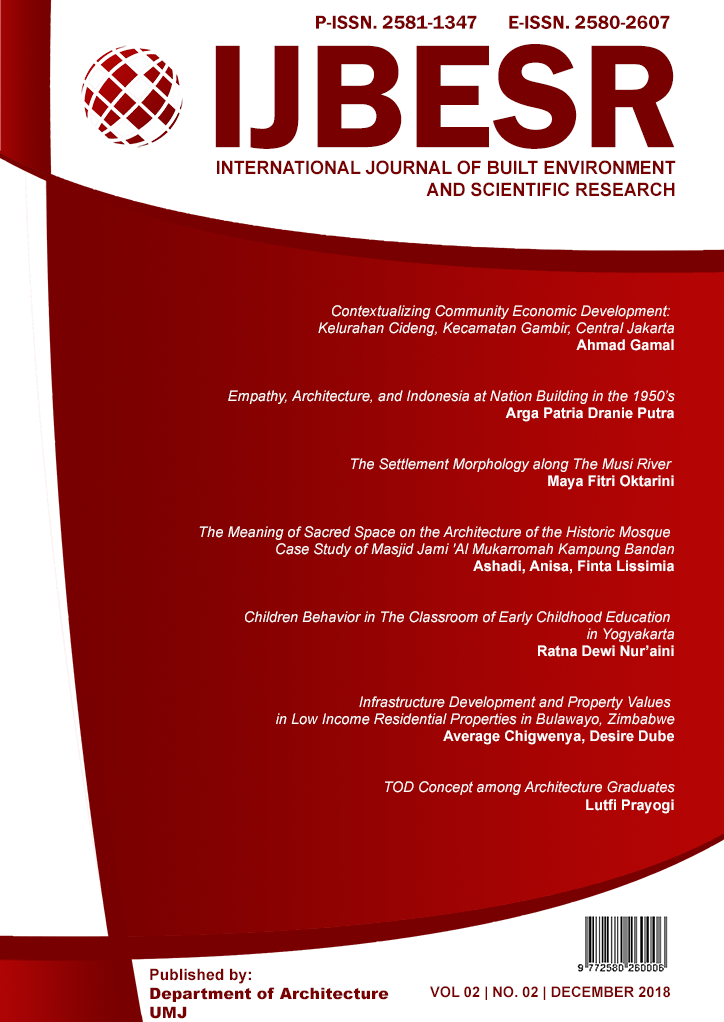Children Behavior in The Classroom of Early Childhood Education in Yogyakarta
DOI:
https://doi.org/10.24853/ijbesr.2.2.117-130Keywords:
activity setting, behavioral mapping, central system, early childhood education, place centered mapping.Abstract
Every child has uniqueness includes the habit in the room, and how to respond to the setting of space. The child's movement in space is related to space and time. Different child behaviors will produce different responses to the space and time. Early childhood education is a basic early childhood to determine the development of children in the future. The objective of this research is to find out early childhood behavior in class settings and factors that influence it. The location of this research is PAUD Ratnaningsih in Yogyakarta, on main role central class. Technique of data collection was done by observation and interview. Method of observation is behavioral mapping focused on children motion. This is to describe the motion of children on the map, to identify the type and frequency of motion and to indicate the relation of motion to the class setting, using the place centered mapping method. The results of this study indicate that the class setting in PAUD Ratnaningsih using a central system that every central consist of activity settings by moving system. Early childhood cannot stay for long time in every activity setting because feel bored, frequently move to other positions. Children cannot focus in long time, behave aimlessly. External factors affect the child's behavior such as elements of space, role of teacher, and the design of activity setting.Downloads
Published
2018-12-30
Issue
Section
Articles







